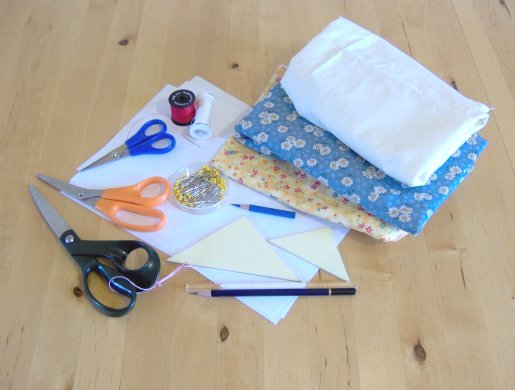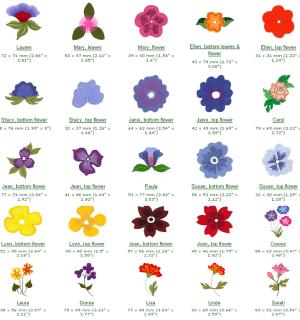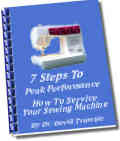
Monday, August 3, 2009
Quilting is a Hot D.I.Y. Craft!

Friday, July 10, 2009
Warhammer Online Mastery Guide
Complete Warhammer Mastery Guide -The Goblin Guide is a complete mastery guide covering every aspect of Warhammer Online.
1-40 Order Guide - Every single Tier, Chapter and Area in the game. Empire, Dwarfs, and High Elfs!
1-40 Destruction Guide - Every single Tier, Chapter and Area in the game. Chaos, Greenskins, and Dark Elfs!!
Detailed Leveling Guides - Our leveling guides are the most detailed guides on the web with step-by-step leveling and detailed colored maps.
Leveling Guide Map Coordinates - Each quest includes the map cords to find every quest item and npc, so you will never be lost again.
Gold Mastery Guide - Learn how to make thousands of gold while leveling to 40 easily and quickly.
RvR Guides - Our RvR guide teaches you everything you need to know about RvR with complete Scenario and Keep Raiding Guide.
Renown Leveling Guide - Level to Renown rank 80 in the shortest time possible with our detailed RvR Renown Leveling Guides
Free Updates - With your purchase of the Goblin Guide you will receive a lifetime membership to and free updates.
for more detials:
click here
Tuesday, June 9, 2009
Discovering RJR Fabrics

Tuesday, April 28, 2009
A Notion About Notions

Metal-edged rulers are used when creating templates and when cutting cardboard and fabric with a rotary cutter or knife.
Metre rules are used with set squares to cut lengths of fabric.
Set squares are used to measure accurate right angles and are used with metre rules to cut lengths of fabric.
Tape measures are flexible measuring tools used for measuring lengths of fabric.
Pair of compasses are used for drawing circles.
Vanishing markers crate special marks that will fade n contact with water.
Dressmaker's wheels and chalk are used to directly mark fabric. The chalk will brush off.
Dressmaker's scissors and shears are used for cutting fabric only.
Paper scissors are used for cutting paper.
Embroidery scissors are small, sharp and often decorative scissors that are used in quilting to cut thread and trim fabric.
Pinking shears have serrated blades. They are used to create decorative edges and prevent fraying.
Rotary cutters are used with a cutting mat. They are great for cutting multiple pieces that are exactly the same, at the same time. Rotary cutters are available in different sizes. Small cutters work best for cutting curves and a few layers of fabric. Large cutters cut many layers at a time and are ideal for cutting long straight lines.
Cutting mats are made especially for use with rotary cutters. They protect both the tabletop and the blade. Mats with printed grids are useful for cutting right angles.
Quilter's needles are used for hand sewing appliqué and patchwork. Betweens are used for making smaller stitches.
Crewel needles are used for working embroidery stitches.
Quilting pins are longer than dressmaker's pins and pass through several layers of fabric easily.
Safety pins are sometimes used in basting quilt blocks together.
Beeswax is applied to quilting thread before stitching so that the thread passes smoothly through the fabric.
Thimbles are essential for hand quilting. They are used to push the needle through several layers of fabric at once. Many styles are available. Some quilters and sewers collect thimbles.
Unpickers-or rippers are used to remove stitches.
Irons are used for pressing patchwork seams and to remove wrinkles from fabric.
Embroidery hoops are used while quilting. Wooden frames are usually used for hand quilting. Plastic frames with metal spring closures are used for machine quilting.
Ribbon may be used to embellish appliqué or crazy patchwork. It may also be used to edge a border. Ribbon may be velvet, satin or manmade material.
Trimmings such as fringing, pompon tape; tassels and flat ribbon tape may be used to make unusual edgings or to embellish a patchwork piece.
Lace can be used to embellish appliqués.
Quilters' gloves offer protection when using rotary cutters and needles.
Needle threaders make threading needles a breeze.
Any of the notions listed above would make a great gift for your favorite quilter.
Friday, April 3, 2009
"Learn Exactly Repair Sewing Machine At Home! In 30 days Or Less ....Guaranteed!"
Dear Friends,
Let’s hear Tony talking about his project
My name is Tony and I started my own sewing machine business 25 years ago. At that time, I had little knowledge of repairing sewing machines. I can well remember looking around for someone to teach me all the ins and outs, all the tricks of sewing machine repair.
But unfortunately no books were available! After 21 years in this business, I have decided to write down all my hard-earned knowledge and tricks-of-the-trade in this step-by-step book.

I want to teach other people how to do their own sewing machine repairs at home for themselves or as a business. As we all know, sewing-machine repair is one of the fastest growing businesses in the world today.
Newspapers, women’s magazines, dry-goods stores, high schools and colleges are all encouraging millions of American women to do their own sewing, not only to make their own slacks, suits, shirts, sweaters, etc, clothes, but also to make nice clothes for their husbands, sons, or boyfriends. Statistics now show the tremendous growth in the number of women who make their own family wardrobe. The latest figures show that over 89 million American women, because of the high costs of ready-to-wear garments or the undesirable workmanship of store-bought clothes, are now making almost all of the clothing for their families. Now is the time when a sewing machine specialist can write his or her own ticket. Never before has the money-making opportunity been so great in this field, if you know what you're doing. And this is not to mention, it is also a very prestigious occupation.But that’s not all.
Most of these women find true enjoyment and satisfaction making the family wardrobe on their own sewing machine. So it is only natural that the demand for excellent service on sewing machines is on the upswing and growing by leaps and bounds. Think of it! Eighty-nine million or more sewing machines, not including another 10 million sewing machines in schools of all sorts, (such as grade schools, high schools, colleges, schools for the deaf, the handicapped, all across the land, just to name a few). And what about the sewing machines in hospitals, prisons, homes of correction, tailor shops, women’s shops, children’s homes and old folks’ homes … the list could go on and on!All these sewing machines need service at least once a year and quite possibly four or more times each year.
I'm well aware that some women are forced to return their sewing machines to repairmen time after time trying to get it fixed properly. Not all, by any means, but many so-called sewing-machine specialists, simply do not have the knowledge or the know-how to correctly set up, adjust and retime the modern sewing machine. I've seen sewing machines come out of repair shops in worse shape than they were when they went in, and I am sure that thousands of women could say "Amen" to that statement. So for the above reasons, I decided to write a complete guide to sewing-machine repair and teach people how to repair their own sewing machines at home. On the very first day, you will find that our simple training method is amazing.
I assume that you have had no previous experience with the repair of sewing machines. However, if you have had experience, you will learn how to use your knowledge to the best advantage. Your training will be practical from first page to the end of the book. It is based on the proven methods of the top sewing-machine technicians.I will teach you everything you need to know.
Admittedly, the book is predominantly about sewing machines with just four of the 70 pages pertaining to. have gone to great lengths to include sharp and clear pictures along with the copy, so there is no need to flip pages back and forth in order to find the picture that goes with the text. There will be pictures of many different sewing machines, as well as illustrations of sewing-machine pails, proper adjustments, cleaning, and timing, etc. It's clear, and it's simple.
Order Today! And Received a "FREE" Bonus
Friday, February 20, 2009
Moda

Moda has won the heart of many quilters nation-wide and internationally with their consistent understanding of the kinds of designs quilters want to use for their projects. Many of the Moda designs have a uniquely American look and feel to them, which is only fitting since quilting is a craft which has its roots deep in American history. Moda also distributes a huge list of books and a wide variety of quilting notions from their Dallas warehouse. The company reveres its retailers and only sells wholesale. You can investigate Moda designs online and find many online retailers that will sell you Moda products.
For the very best of quality in fabric and design, you'll want to look to Moda for your quilting design needs first. You're sure to find something in the Moda line that will capture your heart and make your next quilting project an absolute joy to work on. With a Moda product, the next quilt you make will be your favorite and most satisfying yet.
Tuesday, January 20, 2009
How to Use Templates in Quilting

Templates generally have seam line and other markings on them for the convenience of quilters. The best templates are laser cut to ensure exact precision for measurement.
With quilting templates, a rotary cutter, and a mat, you can cut the pieces for numerous blocks at one time.
Before templates and the use of rotary cutters, a quilter used paper patterns and cut block pieces with scissors, in much the same way that dressmakers cut patterns.
For quilters who are often cutting small pieces for blocks, cutting in this manner meant precision in measuring was very difficult. In quilting, accuracy is crucial.
One of the frustrations of quilting was making sure the pieces of the quilt block fit together, and with the old-fashioned style of cutting, it was a constant problem. But with templates all such worries are a thing of the past.
Quilting templates are available in every size and shape imaginable. Every geometric shape is represented, and you can buy a set of basic templates for squares and circles and rectangles so you always have them on hand. You can also buy sets of templates for a specific quilt block.
For instance, if your daughter is getting married and you want to make her a Double Wedding Ring quilt, you can buy a set of templates for that pattern. Or perhaps your best friend is having her first baby, a son. You want to make a quilt for him, and so you choose a set of templates for a square that looks like an airplane. The options are truly unlimited.
Beginning quilters will want to start with simple shapes such as rectangles, squares and circles. The process is simple-lay your neatly ironed fabric on the rotary mat, place the acrylic template atop it, hold it firmly and use the rotary cutter to trim around the edges. Once you get the hang of it, you can cut several layers of fabric at once. Using templates, you can spend an hour or two cutting pieces for quilt blocks, and get to the actual sewing and quilting so much faster.
Quilters may also want to take the time to browse the web or go to the library or local bookstore for books. Many quilting sites and books contain useful information about using templates, with tips and techniques listed that will make the process even easier. The quilting sites contain are often also laden with photos showing the use of templates in a step-by-step manner, which can be very helpful. Although the process of using templates is simple, there are always trade secrets that can make it even easier.
Investigate the use of templates in quilting today, and you'll find renewed pleasure in your craft.

 Sew More For U, Your Sewing
eGuide
Sew More For U, Your Sewing
eGuide












